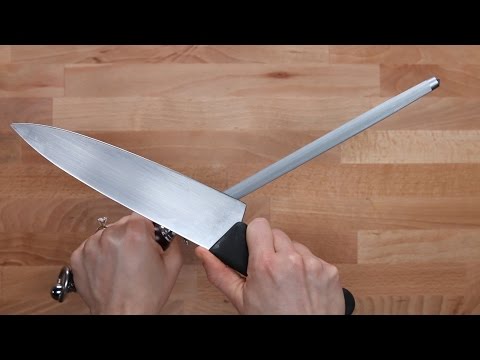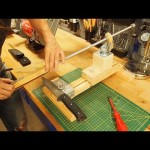
40843f36075907463e121a75d8b7b949
Sharpening a stainless steel knife is an important part of kitchen maintenance. Not only does it help keep your knives in top condition, but it also helps to ensure that they are safe to use. In this article, we will provide a step-by-step guide on how to sharpen stainless steel knives. We will cover the different types of sharpening tools available, the best techniques for sharpening, and how to maintain your knives for optimal performance. With this guide, you will be able to keep your stainless steel knives sharp and ready for use.
Can stainless steel knife be sharpened
Stainless steel knives are a popular choice for many home cooks and professional chefs alike. They are durable, easy to clean, and can hold an edge for a long time. But like all knives, they will eventually need to be sharpened. The good news is that stainless steel knives can be sharpened, but it is important to use the right technique and tools to ensure the best results.
The first step in sharpening a stainless steel knife is to choose the right sharpening tool. A sharpening stone is the best option for stainless steel knives, as it will provide the most consistent results. A sharpening steel can also be used, but it is not as effective as a sharpening stone. It is also important to use the correct angle when sharpening a stainless steel knife. The angle should be between 15 and 20 degrees.
Once the sharpening tool and angle have been chosen, the next step is to begin sharpening the knife. Start by placing the knife on the sharpening stone at the correct angle. Then, using a back and forth motion, move the knife across the stone. Make sure to keep the angle consistent throughout the sharpening process. After a few passes, the knife should be sharpened.
Sharpening a stainless steel knife is not difficult, but it does require some practice and patience. It is important to use the right tools and technique to ensure the best results. With a little practice, anyone can learn to sharpen a stainless steel knife and keep it in top condition.
What grit to sharpen stainless steel knife
Sharpening a stainless steel knife is a tricky task. It requires the right tools and the right technique to get the job done properly. The most important factor in sharpening a stainless steel knife is the grit of the sharpening stone. The grit of the stone determines how sharp the knife will be and how long it will stay sharp.
The grit of the sharpening stone is measured in microns. The lower the number, the coarser the stone. A coarse stone will remove more material from the blade, but it will also leave a rougher edge. A finer stone will remove less material, but it will leave a smoother edge.
For a stainless steel knife, the best grit to use is between 1000 and 3000. This range will give you a sharp edge without damaging the blade. If you want a sharper edge, you can go up to 5000 grit. However, this will take longer to achieve and may require more frequent sharpening.
When sharpening a stainless steel knife, it is important to use a sharpening stone that is specifically designed for stainless steel. This will ensure that the stone does not damage the blade. It is also important to use a lubricant, such as oil or water, to help reduce friction and heat buildup.
Sharpening a stainless steel knife is not a difficult task, but it does require the right tools and technique. The right grit of sharpening stone is essential for getting the job done properly. A grit between 1000 and 3000 is recommended for most stainless steel knives, but if you want a sharper edge, you can go up to 5000 grit.
Can you sharpen a stainless steel knife on a whetstone
Sharpening a knife is an important part of knife maintenance. It is important to keep your knives sharp to ensure they are safe and effective to use. Many people wonder if it is possible to sharpen a stainless steel knife on a whetstone. The answer is yes, it is possible to sharpen a stainless steel knife on a whetstone.
A whetstone is a tool used to sharpen knives. It is made of a hard material, usually a type of stone, and is used to grind away at the blade of the knife. The stone is usually soaked in water before use, which helps to keep the blade cool and prevents it from becoming too hot.
The stone is then used to grind away at the blade, sharpening it.
Stainless steel is a type of metal that is resistant to corrosion and rust. It is a popular choice for knives because it is strong and durable. However, stainless steel is also harder to sharpen than other types of metal. This means that it can take longer to sharpen a stainless steel knife on a whetstone.
When sharpening a stainless steel knife on a whetstone, it is important to use the correct technique. Start by soaking the whetstone in water for at least 10 minutes. This will help to keep the blade cool and prevent it from becoming too hot. Then, use a light pressure to move the blade across the stone in a circular motion. Make sure to keep the blade at the same angle throughout the sharpening process.
It is also important to use the correct type of whetstone. A coarse stone is best for sharpening a stainless steel knife, as it will remove more material from the blade. A fine stone can be used to finish the sharpening process and give the blade a polished edge.
Sharpening a stainless steel knife on a whetstone is possible, but it can take longer than sharpening other types of knives. It is important to use the correct technique and the right type of whetstone to ensure the blade is sharpened properly. With the right tools and technique, you can keep your stainless steel knives sharp and ready to use.
How do you sharpen a knife step by step
Sharpening a knife is an important skill to have in the kitchen. It is essential for keeping your knives in good condition and ensuring that they are safe to use. Here are the steps to follow when sharpening a knife:
Step 1: Gather the Necessary Materials
Before you begin sharpening your knife, you will need to gather the necessary materials. You will need a sharpening stone, a honing steel, a cloth, and some lubricant. The sharpening stone is used to grind away the dull edges of the blade, while the honing steel is used to realign the blade’s edge. The cloth is used to wipe away any debris, and the lubricant is used to keep the blade from becoming too hot.
Step 2: Prepare the Knife
Once you have gathered the necessary materials, you will need to prepare the knife. Start by wiping the blade with the cloth to remove any debris. Then, apply a few drops of lubricant to the blade. This will help to keep the blade from becoming too hot during the sharpening process.
Step 3: Sharpen the Knife
Now it is time to sharpen the knife. Start by placing the sharpening stone on a flat surface. Hold the knife at a 20-degree angle and begin to move the blade across the stone in a circular motion. Make sure to keep the angle consistent throughout the process. After a few passes, you should begin to see a burr forming on the blade. This is an indication that the blade is being sharpened.
Step 4: Hone the Knife
Once the blade has been sharpened, it is time to hone the knife. Start by placing the honing steel on a flat surface. Hold the knife at a 20-degree angle and begin to move the blade across the steel in a circular motion. Make sure to keep the angle consistent throughout the process. After a few passes, you should begin to see a burr forming on the blade. This is an indication that the blade is being honed.
Step 5: Clean and Store the Knife
Once you have finished sharpening and honing the knife, it is time to clean and store it. Start by wiping the blade with the cloth to remove any debris. Then, apply a few drops of lubricant to the blade. This will help to keep the blade from becoming too hot during storage. Finally, store the knife in a safe place, such as a knife block or a drawer.
Sharpening a knife is an important skill to have in the kitchen. By following these steps, you can ensure that your knives are always in good condition and safe to use. So, the next time you need to sharpen a knife, just follow these steps and you will be good to go!
We hope this guide has been helpful in teaching you how to sharpen stainless steel knives. With the right tools and a bit of practice, you’ll be able to keep your knives in top condition for years to come.
Thank you for reading, and goodbye!














